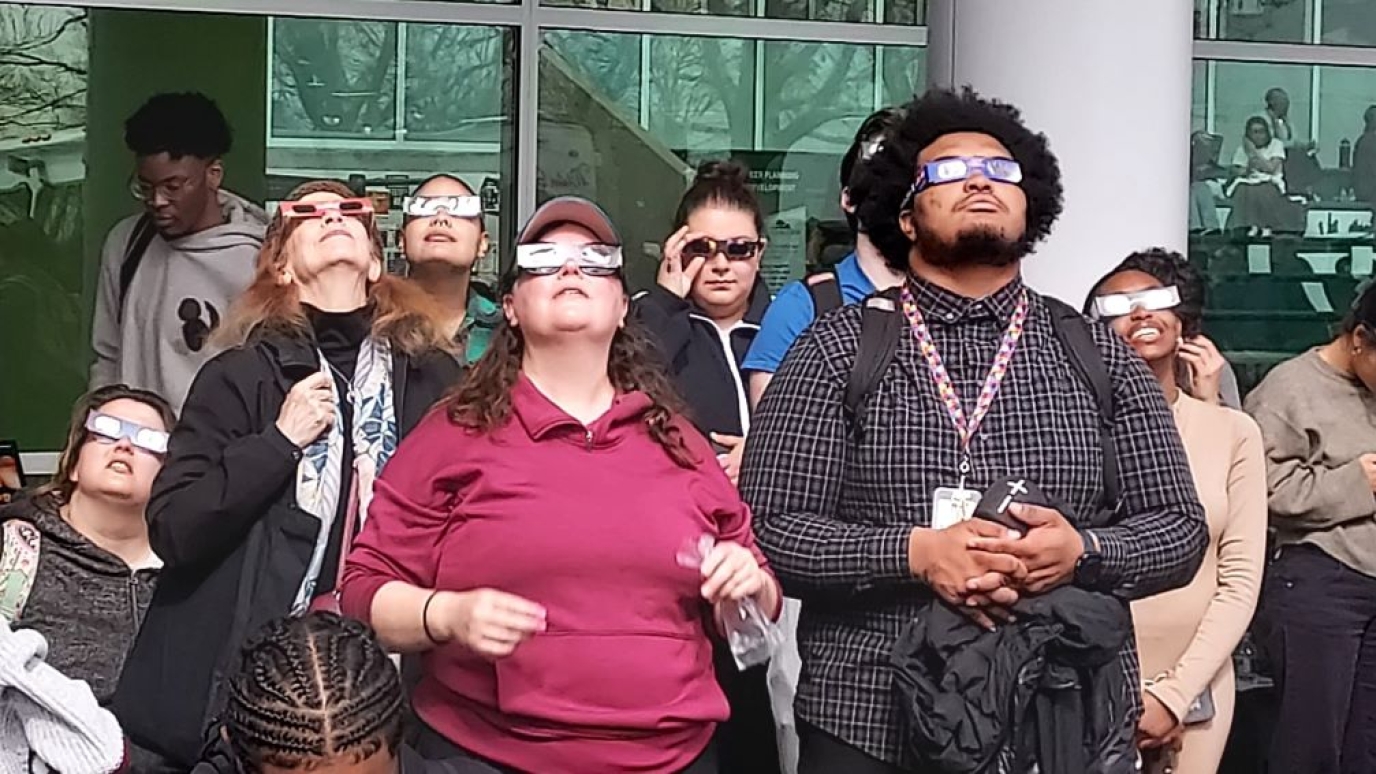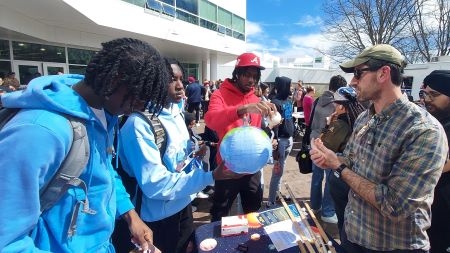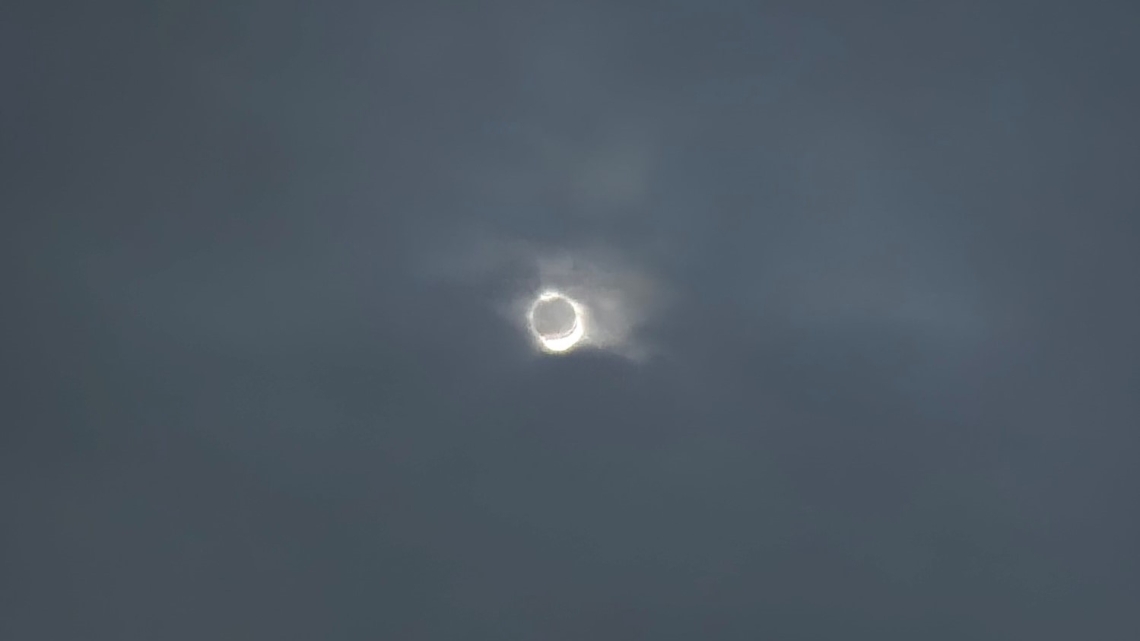
The buzz of conversation, crunching of SunChipsâ, and munching of Moon Piesâ in the crowd of more than 300 was replaced with a collective hush and murmurs of wonder at approximately 3:27 p.m. on April 8, 2024, as a solar eclipse reached its peak for the Long Island region.
While not in the path of totality for the eclipse, the SUNY Old Westbury campus experienced a nearly 90 percent blockage of the sun, offering up a unique opportunity for all associated with the University to join together for a combined social and learning experience.
The audience of students, faculty, staff and guests stood in awe on the campus’ Meadow Terrace as the sky grew darker and the temperature dropped.
Physics professors Matthew Lippert and John Estes used models to teach the attendees about the phenomenon they were experiencing, telescopes and binoculars – properly fitted for eye protection – were in use to provide closeup views of the celestial event, and all present were adorned with safety “eclipse” glasses provided by the campus’ Collegiate Science, Technology Entry Program.
“The eclipse provided a great opportunity to connect with our students from all majors and teach them a little bit about astronomy and physics,” said Lippert, who helped plan the viewing party. “Bringing scientific theories and concepts into everyday life is incredibly valuable in helping people better understand the world, and cosmos, that they inhabit.”
Prospective students and their families were invited to participate, and the audience included local representatives of New York State Governor Kathy Hochul.
On the Road
While the crowd gathered on the Long Island campus, another 150 students, faculty and staff had left before dawn that morning, taking part in an all-day road trip to experience the event in Oswego, New York, which was in the path of totality.
As the buses traveled North, Lippert explained to local National Public Radio affiliate WSHU what they were about to experience.
Once there, the group participated in activities at SUNY Oswego and, while clouds filled most of the sky, did get a glimpse of the total eclipse of the sun.
“Solar eclipses from the Earth's vantage point are so different and rare than those in other planetary systems because of the coincidental and near identical match of the size of the moon and the sun when they align," said Dr. Michael Kavic, associate provost and an astrophysicist. “I am so glad we could make this trip happen for so many of our students. This type of experience is one that will stay with a person for the rest of their lives. To see the clouds part and allow us to see the eclipse in its totality is a memory I will never forget, and I expect our students feel the same way.”
All of North America and Central America experienced a partial solar eclipse but only those within the path of totality — an approximately 115-mile (185-kilometer) wide route through Mexico, 15 U.S. States and Canada — were able to see the moon entirely cover the sun's disk, according to NASA.


